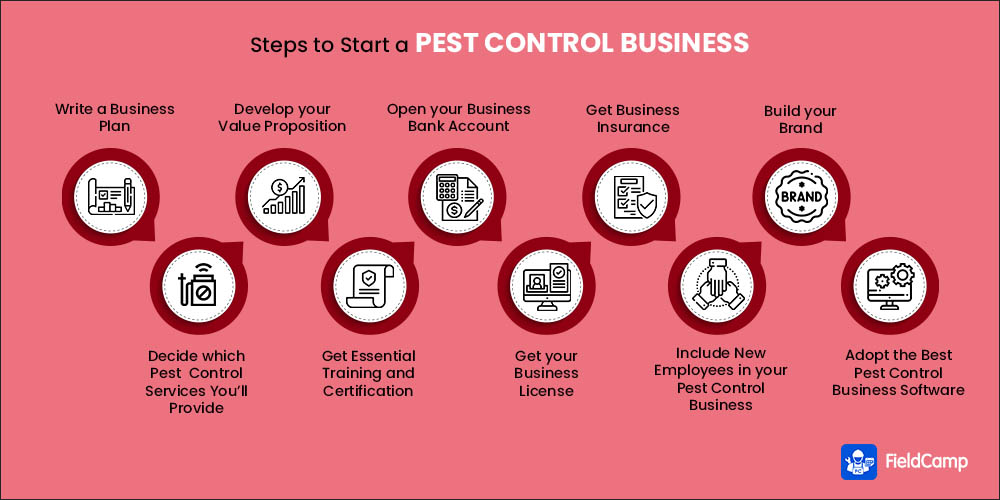10 Easy Facts About Pestwise Explained
10 Easy Facts About Pestwise Explained
Blog Article
Fascination About Pestwise
Table of ContentsThe Ultimate Guide To PestwiseGetting My Pestwise To WorkGetting My Pestwise To WorkThe Main Principles Of Pestwise Not known Facts About PestwiseNot known Facts About PestwiseThings about Pestwise

Q. Specify "incorporated parasite management" (IPM) and listing numerous feasible control tactics that may be used in an IPM strategy. A. Integrated bug administration is the combining of proper insect control strategies right into a solitary strategy to minimize pests and their damages to an acceptable level. Parasite control techniques may include: host resistance, biological control, social control, mechanical control, sanitation, and chemical (chemical) control.
The Ultimate Guide To Pestwise
What can you do to maintain the parasites you are trying to regulate from ending up being resistant to the chemicals you utilize? A. Bug resistance can be reduced by utilizing integrated pest monitoring and turning the sorts of pesticides used.
Parasites are an essential danger to the farming organization, and integrated bug administration assists growers address and alleviate these threats. Integrated parasite monitoring utilizes a number of methods in complicated, therefore being a much more reliable solution to the issue. Pest Control. Specifically, eliminating aggressive chemical methods permits reducing damage to people and the atmosphere by making use of all-natural and much safer choices rather
Pestwise - Truths
The goal of incorporated parasite management is to lessen this damage and control appropriate invasion levels as opposed to eradicate all undesired populations. This is why it is very important to comprehend what actions are warranted in each situation and use hostile ones just when other incorporated management strategies do not work. Integrated management minimizes the adverse consequences of a non-IPM technique, and the main benefits of IPM Benefits of IPM.
A proper understanding of the invasion extent figures out if the problem must be addressed. are the next parts of an IPM program because it is very important to realize if the organisms make prospective threats and select the incorporated monitoring options or the certain chemical use. mean to minimize infestations by applying various agronomic strategies.
See This Report about Pestwise
Integrated management alternatives in an IPM program beginning with much safer to a lot more aggressive ones. The above-mentioned incorporated administration aspects help understand just how to intend and implement an IPM program action by action: Screen your crops on a regular basis.

Among others, IPM social approaches include the complying with area management strategies: soil treatment; option of suitable plants; plant rotation; interplanting or strip chopping; selection of planting dates; weed control; usage of catch plants. Positive dirt conditions speed up plant development, and strenuous crops are a lot more immune to infestations. Healthy plants and seeds determine effective crop development, so it is crucial to pick pest-free growing material with strong roots.
Hence, to name a few applications, plant turning can be efficiently utilized as an integrated insect monitoring approach. Pests spread out slower if rows of different crop types divide their host plants in intercropping or strip cropping, which is likewise used in the incorporated parasite management system. Alternatively, infestations enhance when plants of the very same crop kind or family grow with each other.
Likewise, potato beetles can damage growing potatoes, in addition to tomatoes. Growing catch plants in spots is another option for IPM intercropping. This integrated insect management technique recommends drawing in parasites to particular plants and then controlling them with chemical or mechanical strategies. Specifically, you can expand soybeans as trap plants for Japanese beetles.
What Does Pestwise Do?
Barriers are case in points of physical IPM methods. Let's take a more detailed look at them. Getting rid of or choosing bugs out by hand is a time and labor-consuming choice that is widely used in incorporated management and chemical-free farming. Fully grown insects or their eggs and larvae are accumulated by hand and ruined.

Division of Plant Sciences. This incorporated management technique indicates a common means of damaging insects by predators, parasitoids, virus, and various other biological control representatives (aka antagonistic microorganisms). The duty of biological control in IPM is to.
Little Known Questions About Pestwise.
With time, their population transformed out to be a real problem to farmers together with aboriginal kangaroos or dingoes. The cane toad is another situation showing integrated organic control failing in this respect when it refused to hunt the target species and became a pest itself. Parasitoids create on or her explanation within their hosts to at some point kill them after developing.
Report this page